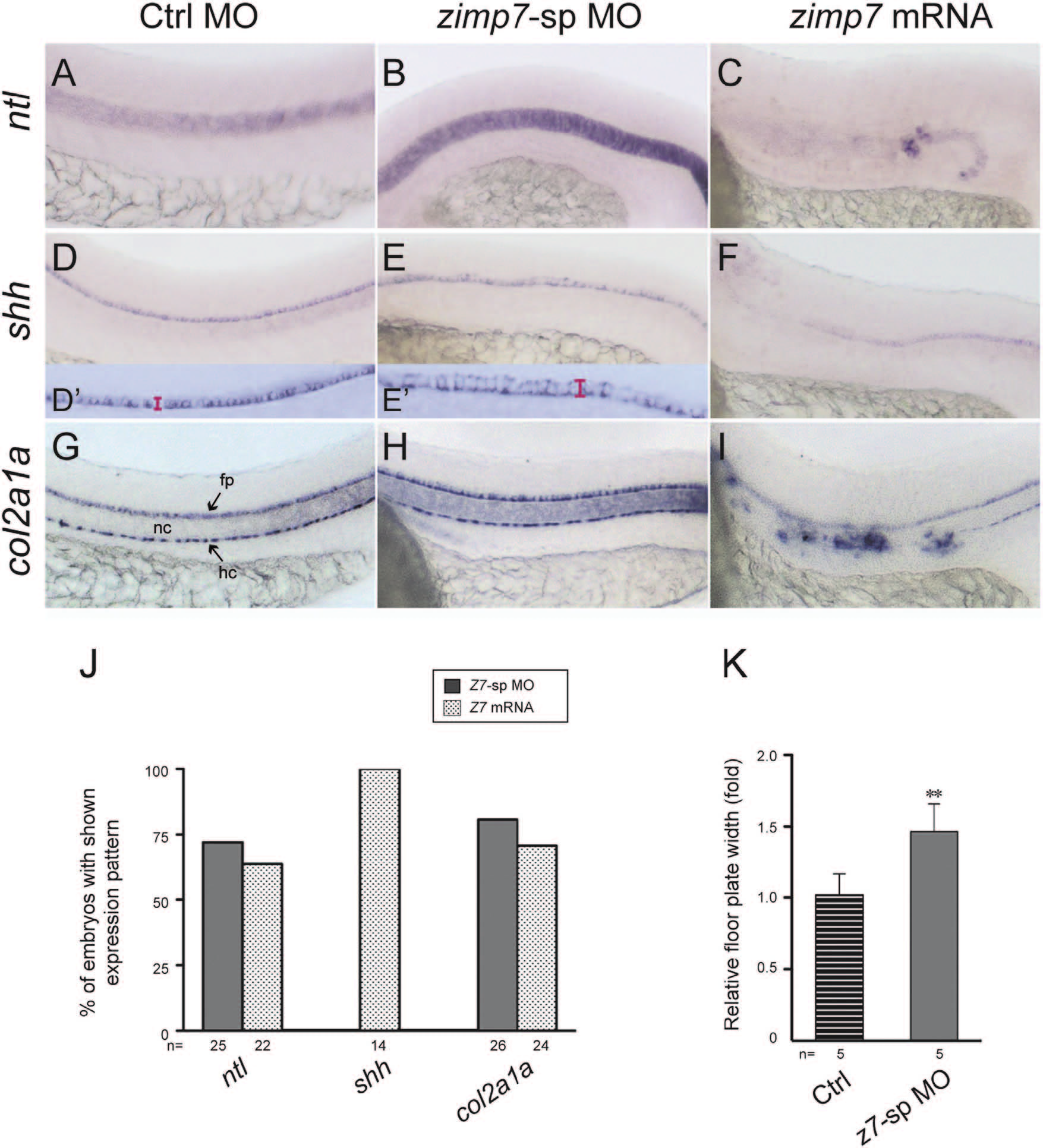Fig. 4
Loss and gain of function of Zimp7 exert opposite effects in midline structures. Lateral views (anterior is left) of ntl (A–C), shh (D–F) and col2a1a (G–I) expression in Ctrl MO+p53 MO (A, D, G), zimp7-sp MO+p53 MO (B, E, H) and zimp7 mRNA (C, F, I) injected embryos at 26 hpf. Compared to the control embryo (A), ntl expression in the notochord is increased in a Zimp7 knockdown embryo (B), while it is nearly lost in the gain-of-function embryo (C). Expression of shh marks the floor plate. Compared to the control embryo (D) the floor plate is widened in the morphant (E). D′ and E′ show four-times magnified images of the corresponding embryos, where the engrossment of the floor plate was measured (area indicated with a red bar). shh expression reveals the lost of floor plate in embryos injected with a zimp7 mRNA (F). Expression of col2a1a outlines the floor plate and hypochord in a control embryo (G). (H) In knockdown embryos, no significant differences are appreciated in the hypochord, whilst the floor plate exhibits a stronger signal compared to the control embryo. In the embryos overexpressing Zimp7 (I) the signal in the hypochord is defective and ectopic positive signal is detected. fp, floor plate; hc, hypochord; nc, notochord. (J) Percentage of embryos with shown expression pattern in B, C, F and I. Total number of embryos examined indicated at the bottom. (K) Measurements of shh positive signal in Ctrl MO and zimp7-sp MO injected embryos. **p<0.01.
Reprinted from Developmental Biology, 403(1), Moreno-Ayala, R., Schnabel, D., Salas-Vidal, E., Lomelí, H., PIAS-like protein Zimp7 is required for the restriction of the Zebrafish organizer and mesoderm development, 89-100, Copyright (2015) with permission from Elsevier. Full text @ Dev. Biol.

